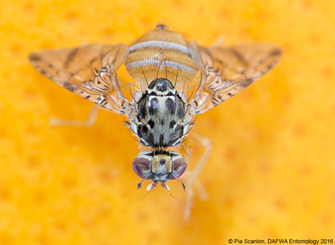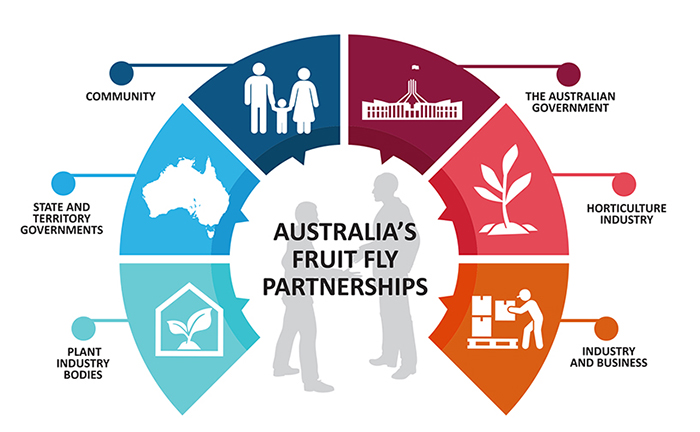Through the department, the Australian Government is driving improvements to the national management of fruit fly in partnership with state and territory governments, industry and community. This coordinated and shared approach ensures our management of fruit remains strong, facilitating favourable market access for the export of high-quality produce to international markets.
Successful management of fruit fly is supported by:
- distribution mapping
- interstate quarantine restrictions
- pest free area management activities
- domestic and offshore surveillance and trapping networks
- research and development
These activities are performed by the Commonwealth, state and territory governments under the guidance of the Australian National Fruit Fly Management Protocols.
Pest Free Area
A Pest Free Area (PFA) is an area in which a specific pest does not occur as demonstrated by scientific evidence and supported by ongoing management arrangements. The state of Tasmania and the Riverland region of South Australia are recognised by many of our international trading partners as free from both Qfly and Medfly. Commodities from recognised fruit fly PFAs do not require phytosanitary treatments, to be exported.
Management of fruit fly in the PFAs is supported by:
- extensive trapping and surveillance programs
- rapid diagnostics
- stringent procedures to validate PFA status
- clean production pathways
- formal, nationally agreed, management principles for fruit flies outlining specific export requirements under the Australian National Fruit Fly Management Protocols (Operations Standard 1 – Pest Free Areas)
- industry engagement and public awareness campaigns.
Response activities
If an outbreak is detected within a PFA, governments implement a prompt response. Responses to fruit fly outbreaks are acted upon in accordance with the Protocols and internationally recognised procedures, to preserve the PFA’s fruit fly free status. Trading partners are notified about the outbreak, the eradication process, and the appropriate levels of biosecurity protection that will be implemented to allow safe trade to continue.
National Fruit Fly Trapping Surveillance Network
Fundamental to supporting area freedom from fruit flies in Australia is the national fruit fly surveillance network. This draws together specific surveillance activities (for example, in the Torres Strait islands) and high-density trapping administered within established fruit fly free areas across the various states and territories.
These programs function as early warning systems to:
- detect exotic fruit fly incursions, and incursions of fruit flies into PFAs
- verify established fruit fly area freedom status
- provide continued information on species’ regional distributions
- inform quarantine decisions and fruit fly strategies.

Mediterranean fruit fly
Photo credit: Pia Scanlon DPIRD Plant Biosecurity 2016
Innovation and technology
We are committed to reducing our reliance on agrichemicals and are therefore introducing new and innovative fruit fly management strategies. These include Sterile Insect Technology (SIT), and funding research and development programs to further enhance and modernise our fruit fly management techniques.
SIT is an environmentally friendly insect pest control method involving the release of sterile insects into a wild population. When applied to fruit flies, sterile male flies compete with wild males and unsuccessfully breed with females, which decreases the population over time.
SIT has successfully been used in Qfly and Medfly eradication responses in combination with other treatments to control incursions.
Find out more

